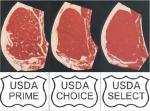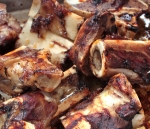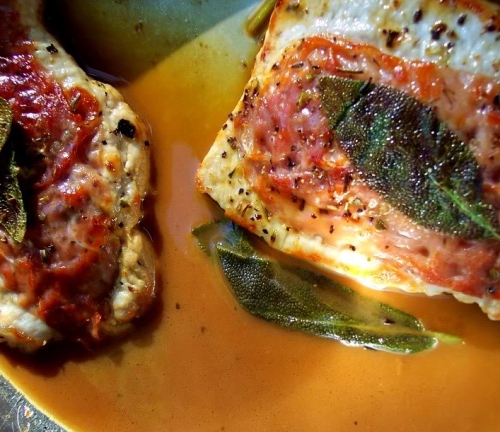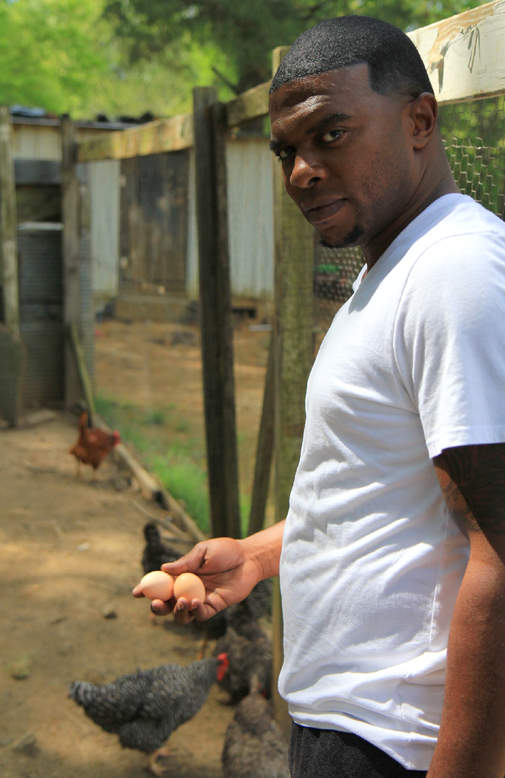Vishwash Bhatt: (Snack Bar) Bill Neal, Southern Cooking; Ben and Karen Barker: Not Afraid of Flavor: Recipes from the Magnolia Grill; Norman van Aken, New World Kitchen; Floyd Cardoz, One Spice Two Spice: American Food, Indian Flavors; John Currence, Trailgreat: How to Crush It at Tailgating; Lafcadio Hearn, The Times-Picayune Cookbook; Irma Rombauer, The Joy of Cooking. And obviously, I am a big fan of my own book! (I Am From Here: Stories and Recipes from a Southern Chef)
Dan Blumenthal: (BRAVO!) La Technique by Jacques Pepin—step by step intro to classic French cooking with many helpful photos; On Food and Cooking by Harold Magee-The Bible of food chemistry; just loaded with knowledge about food in general; The Classic Pasta Cookbook by Giuliano Hazan—Wonderful intro into the world of Italian pasta making
Marisol and Rory Doyle (Leña Pizza + Bagels) We went to Naples, Italy, in 2022 to study at the Associazione Verace Pizza Napoletana (AVPN) and Scuola di Pizzaioli. These are the books we used for research before opening Leña Pizza + Bagels: Flour, Water, Yeast, Salt, Passion – Vera Pizza Napoletana by Carlo Petrini; Flour, Water, Salt, Yeast by Ken Forkish, and The Pizza Bible by Tony Gemignani.
Alex Eaton: (The Manship) Donal Link – Real Cajun -This is a bad ass book that is spot-on with his recipes. He really is teaching how to cook real Cajun food. From boudin to fried oysters it’s my go to when cooking rustic Cajun food. Mike Solomonov – Zahav Cookbook– In the world of Middle Eastern cooking Arab chefs are so secretive; I once tried to learn how to plate hummus and the chef would not let me come back in the kitchen and watch. This book is useful and extremely helpful with his techniques in the secretive cooking of Middle Eastern food. Hot and Hot Fish Club Cookbook, Chris and Idie Hastings; I love this book not only because it goes season by season… but I actually worked here and was impressed that the cooks and prep cooks used the book for their work; often times chefs seem to just guess at these recipes, and they never come out right.
Hunter Evans: (Elvie’s) Two of my favorite and formative cookbooks while learning to cook were Afield, by Jesse Griffiths and Southern Comfort by Slade Rushing.
Martha Foose: (the Bottle Tree Bakery, author of Screen Doors and Sweet Tea) The Inverness Cookbook, The Time-Life Picture Cookbook, and The Better Homes & Gardens Look and Cook Book.
Jeff Good (BRAVO!, Broad Street Baking Company, Sal & Mookies) In the early years of BRAVO!, our twins were toddlers, and my wife was the chair of the Junior League of Jackson Cookbook Committee. She would spend afternoons with the girls buckled in their car seats and the back of the white station wagon filled with cases of the wildly successful Come On In! cookbook – the second effort by the Junior League at providing households with an abundance of time-tested and tasty recipes great for family meals or fancy parties. She would deliver these books to bookstores, retailers and whoever wanted to carry the cookbook everyone was talking about.
As a part of her work, a lot of these recipes came alive in our kitchen. I would return home past midnight most nights, and raid the refrigerator for leftovers, often something savory from the pages of Come On In!. For this reason, when asked what cookbook has been most influential to me, this one wins hands down.
Dixie Grimes: (Sweet Mama’s) These are in no particular order, as I adore all three equally. White Trash Cooking– Ernest Matthew Mickler. This book speaks to my very soul as a southerner from rural Mississippi. One has to understand that this is not a book mocking a poor class of people but a shout out to the most real and righteous cooking of the south. Recipes for Potato chip sandwich, Cooter Stew, 1-2-3-4 cake as well as or most importantly Fried Squirrel, Butt`s Gator Tail and Aunt Donnah`s roast possum.
It is all about necessity, using what you have, not what you want and making it taste good. Betty Crocker`s Picture Cookbook circa 1950. This book was geared towards the 1950`s housewife, an era of three martini lunches, church socials, afternoon bridge games and cocktail parties and the perfect Ozzie and Harriet housewife/mother who flawlessly executed them without so much as a wrinkle in her skirt: simple, yet elegant. The recipes consist of all things souffléd, scalloped, congealed and supremed. Canapes and sparkling punch with sherbet is what’s up. As a chef I adore the nostalgia this book holds, and the old school feel of classic recipes no longer in use like Pompano En Papillote and Seafood a la Newberg.
The Joy Of Cooking: The title says it all, cooking can be fun and easy it does not have to be a chore or dreaded task. This is the book that I give to all young couples starting out and to anyone who says, “Hey, I would love to learn to make some basic dishes but just do not know where to start.” I consider this book a staple in my own kitchen. It pretty much has a recipe for ANYTHING one might want to cook as well as covering all basic techniques of baking and cooking, i.e. roasting, boiling, braising, sautéing etc. It explains why things work the way that they do, like why butter needs to be cold for biscuits and pie crust or softened for cakes and frostings. Also included is a fantastic conversion chart for measurements which believe it or not I still use regularly, because like most chefs math is not my strong point.
Jesse Houston: (formerly Saltine) Three cookbooks that had a large influence on my career are Momofuku by Peter Meehan and David Chang, The Lee Brothers Southern Cookbook, and Under Pressure by American chefs Thomas Keller and Michael Ruhlman. I read them all cover to cover and absorbed as much of their knowledge as possible. I’ve cooked more recipes out of Momofuku than almost all of my many cookbooks combined.
I was a kid right out of culinary school when it came out and picked it up because I heard it was a fresh way of looking at food. In the opening pages they were dropping f bombs, and I knew this would be unlike anything I had read before. Being a Dallas native, Southern food wasn’t really easy to come by and I didn’t know much about it, but I was about to relocate to the South to open a revolutionary Southern restaurant, Parlor Market. I read every word in the Lee brothers’ book, and I was able to get comfortable with ingredients I had never used before in my life. It should be considered a Southern cook’s bible.
Under Pressure is a book all about advanced cooking techniques used in a modern kitchen, most noticeably sous vide. Although I don’t use sous vide much anymore, it taught me so much about modern cuisine. Currently I’m influenced by books from Noma and Rene Redzepi for their beautiful simplicity and natural approach. They use a lot of modern techniques as well, but hide them in ways that will surprise you, but also seem incredibly natural, as if it were found in nature that way.
Lou LaRose: (Lou’s Full-Serv) I can tell you that Larousse Gastronomique was the first book I ever got. My dad gave it to me back in the early 90’s. From there I was intrigued by lots of the recipes. Old school French was definitely a favorite of mine. I was also very fond of the early “great chefs” shows. I collected all of the books from San Francisco, New Orleans. Chicago etc. James Beard’s Beard on Bread was a hand me down from my grandmother, and I cooked many things from that as well.
April McGreger: (author, The Complete Guide to Canning and Preserving (Centennial Books), and Sweet Potatoes (UNC-Press) By the time I was 12 years old, I was proficient enough in the kitchen that I could follow my mother’s index card recipes for easy weeknight meals, mostly either casserole-style bakes like chicken and rice or smothered cabbage. I was a young teenager when I decided I wanted to learn how to make chicken spaghetti. I had it at a church supper and came home to ask and my mama why she’d never made it. “You make it!” she responded. I think there’s a recipe in Pick of the Crop.”
The Pick of the Crop was the cookbook most important to my development as a cook and,
particularly, as a Southern cook, is. It was published the year after I was born in 1978 by the North Sunflower PTA of Drew, Mississippi. I do not know the details of the book’s journey out of the Delta and 100 miles east to the red clay hills of Mississippi in which I was raised, but it was hands down the most constant source of recipes that sustained my family.
My mother’s copy was littered with her left-handed checks and notes like “try this!,” “soo good!,” or “easy!”. Mark’s Chicken, Cabbage Casserole, and Sausage-Rice Casserole were all in regular rotation on the McGreger supper table, but the first dish that I personally ever became known for was Mrs. Archie (Olivia) Manning’s Chicken Spaghetti I. I was 12 years old from a
family of Mississippi State fans. I didn’t even know who Archie Manning was. Nobody yet knew Peyton or Eli.
But from that recipe I learned the value of stock when I was instructed to cook the spaghetti in the broth in which I cooked the chicken. Years later when I was taught the classic French bechamel and Mornay sauces, I realized I’d been making them since 1989 when Chicken Spaghetti became my signature dish.
Alex Perry (Vestige) Three books stand out: The first two are books that when I finished them, it made me realize how little I knew about food and cooking, which is somehow both innervating and inspiring.
The French Laundry Cookbook (original pressing). During culinary school, a then girlfriend gifted me this book for my birthday. Now attending Le Cordon Bleu, I was very self-assured that I was getting the summation of what French cuisine was…until I parted that iconic cover…here was food that was complex, multi-staged, but so modern, fresh, and clean. Immaculate presentation, but nothing ever seemed ornate or garish…no movement was wasted, no ingredient superfluous. And all rooted in French traditions. I knew then I hadn’t even hit mark twain on what food could be.
Kaiseki: The Exquisite Cuisine of Kyoto’s Kikunoi Restaurant. One Christmas, Kumi (wife and Vestige co-owner) got me this book to introduce me to the world of high-end Japanese cuisine. Now this book was one where the recipes were tucked away in the back, so when viewing the dishes, you really didn’t know much about what went in to them. To say these plates of food were jaw dropping in their beauty would be underselling it. Every dish would be right at home adorning the walls of the world’s best galleries. How did they do it?? Surely dishes like this would require massive ingredient lists with days or even weeks of preparation, right? Get to the end…. some dishes would only feature 4 our 5 ingredients total! What?? How??? It became very obvious rather quickly that Chef Murata was operating on a seemingly different plane of existence. The ability to capture the majesty of nature and the seasons with so few ingredients was transformational.
The Art of Living According to Joe Beef: A Cookbook of Sorts. A book about true love for food and those that inhabit a restaurant’s walls. With all the chefs’ witticisms and anecdotes, you learn to just let go and not take yourself too seriously. Food at the end of the day should be fun…enjoy the process, be gracious in all things, and never let self-doubt limit your ability to create.
Taylor Bowen Ricketts: (Fan and Johnny’s) The River Cottage Cookbook by Hugh Fernley-Whittingstall because I love him and the way he cooks, my great-grandmother’s well-documented, preserved and used notebooks that somehow I was lucky enough to inherit, and the St. Stephens’ Episcopal chicks of Indianola, Ms. cookbook, Bayou Cuisine. Delta women are by far and away the best cooks and hostesses, more particular, demanding, and expecting of any women on earth, and rightly so; almost every one of us bitches can cook.
Robert St. John: (Crescent City Grill, Mahogany Bar, Loblolly Bakery, columnist, author) Culinary Artistry by Andrew Dornenburg and Karen Page— My copy is so dogeared and worn. This book probably gets more use than any other in my collection. The recipes and restaurants are dated at this point, but the flavor profiles and dynamics are spot-on and useful. It’s the first book I bought my son when he told me of his desire to go into the restaurant biz. “The Flavor Thesaurus” by Niki Segnit is a newer, more comprehensive, book. I just bought my son a copy of this one, too.
Randy Yates: (formerly Ajax, now at large) The Joy of Cooking and the Jackson Junior League cookbook, Southern Sideboards, were always in our kitchen, as was River Road Recipes. I learned how to read from a book version of “On Top of Spaghetti”
Malcolm White (formerly Hal & Mal’s, host of “Deep South Dining” on Mississippi Public Broadcasting) Jesse’s Book of Creole and Deep South Recipes, 1954; The New Orleans Cookbook by Rina and Richard Collin, 1975; Southern Food by John Egerton, 1987; A Cook’s Tour, by Angela Myers & Susan Puckett (forward by Willie Morris), 1980







